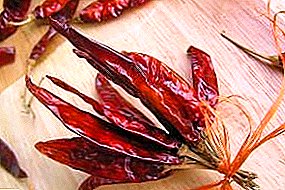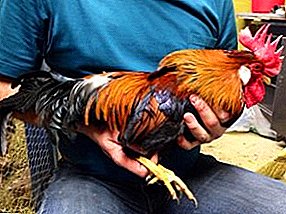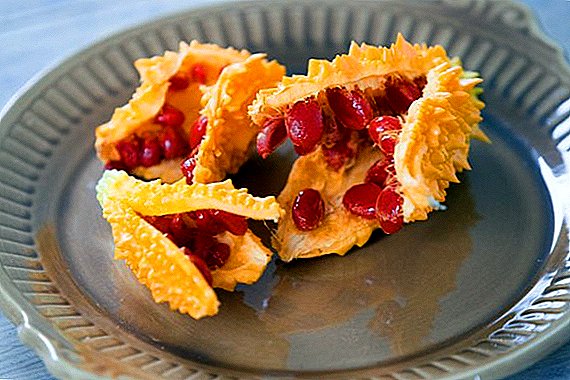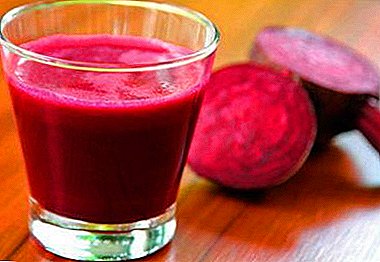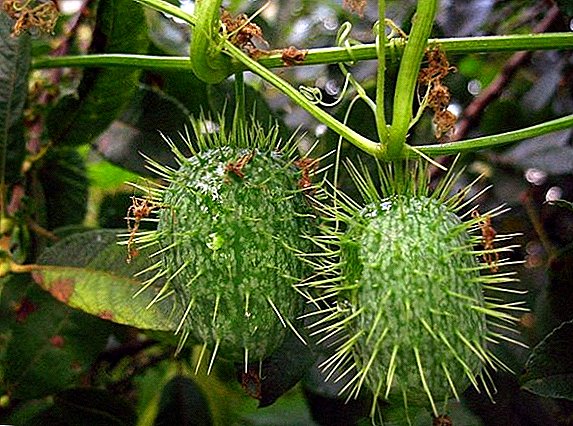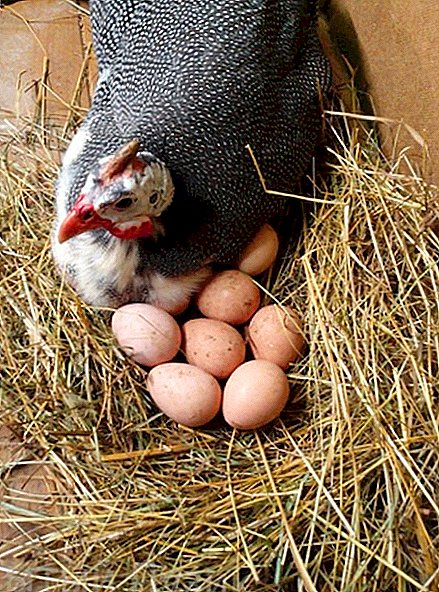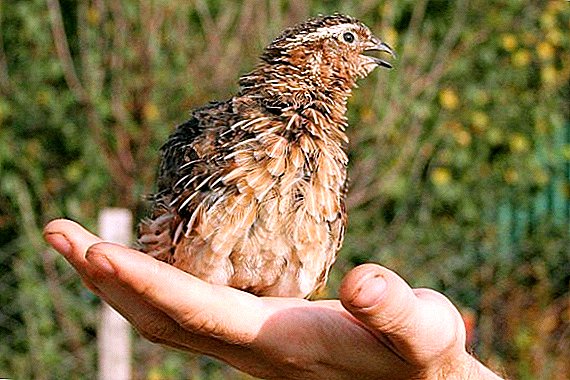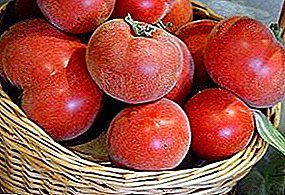
Tomatoes "Peach" justify their name - round shape, rough skin, yellowish color. There are several subspecies of the variety - “Red”, “Yellow”, “Pink F1”. The main difference is coloring. These tomatoes have some good qualities that can attract lovers of gardening.
Read in our article a complete description of the variety, get acquainted with its characteristics and learn the features of cultivation.
Tomato Peach: variety description
| Grade name | Peach |
| general description | Mid-season indeterminantny grade |
| Originator | Russia |
| Ripening | 100-115 days |
| The form | Rounded |
| Colour | In ripe fruits of tomato "Peach yellow" - creamy yellow, red subspecies - red, pink - light cherry, white - transparent greenish |
| Average tomato mass | 100g |
| Application | Universal |
| Yield varieties | 6-8 kg per square meter |
| Features of growing | Agrotechnika standard |
| Disease resistance | Resistant to diseases |
 Tomatoes "Peaches" are indeterminate plants, not standard, about 150 to 180 cm high. Usually they are formed into one strong powerful stem. Rhizome well branched, develops horizontally. Leaves "potato" type, dark green, wrinkled small size. There are a lot of brushes with 5-6 fruits on the stem. The fruit stem is strong - fruits are not showered. The inflorescence is simple, it forms over a 7-8 leaf, then - through every 2 leaves. Early ripening, the crop can be harvested at 90-95 days after planting.
Tomatoes "Peaches" are indeterminate plants, not standard, about 150 to 180 cm high. Usually they are formed into one strong powerful stem. Rhizome well branched, develops horizontally. Leaves "potato" type, dark green, wrinkled small size. There are a lot of brushes with 5-6 fruits on the stem. The fruit stem is strong - fruits are not showered. The inflorescence is simple, it forms over a 7-8 leaf, then - through every 2 leaves. Early ripening, the crop can be harvested at 90-95 days after planting.
So, let's understand the subspecies of this variety. Let's start with tomato "Red Peach" - mid-season, harvest for 115 days. Suitable for open and protected ground. The following tomato "Peach Pink" F1, it is distinguished by a large number of fruits on the brush, up to 12 pieces. The variety is resistant to many diseases and pests. Also derived hybrids of the same name with even more qualitative features. Tomatoes "Peaches F1" have the shape and skin of the same as that of their counterparts, but is characterized by large fruit sizes.
All subspecies are round, not ribbed, with a rough surface, no stains at the stem. Usually about 100 grams, medium in size. Fleshy, sweet (up to 10% sugar content), sour, fragrant.
Dry matter in the fruit contains a minimum amount. Have 2-3 chambers for seeds. Long stored, well transported.
The color of the immature fruits of all subspecies is light green. The ripe fruit of the tomato “Peach Yellow” has a creamy yellow, red subspecies is red, pink is light cherry, white is transparent greenish. In the gardens rarely meet the white subspecies of tomato.
Compare the weight of the fruit with other varieties can be in the table:
| Grade name | Fruit weight |
| Peach | 100g |
| Tsar Peter | 130 grams |
| Peter the First | 30-250 grams |
| Black moor | 50 grams |
| Apples in the snow | 50-70 grams |
| Samara | 85-100 grams |
| Sensei | 400 grams |
| Cranberries in sugar | 15 grams |
| Crimson Viscount | 400-450 grams |
| The Tsar Bell | up to 800 grams |
Specifications
The result of our compatriots - breeders. Registered in the State Register of the Russian Federation in 2002. Grow with great success in Ukraine, Russia and Moldova. It is considered a dessert variety of universal application. Good fresh when heat treated. Great for whole canning, the fruits do not crack. Taste is not lost when used in various salads. Suitable for the production of juice and tomato paste, sauces.
Of the shortcomings distinguish fruit pubescence, some consider the pubescence to be a highlight.
Advantages:
- high yield;
- color, shape of the fruit;
- taste;
- unpretentiousness;
- resistance to cold;
- good immunity to disease;
- not afraid of most insects - pests.
The average yield of about 6-8 kg per square. m - about 2, 5 kg per plant. In greenhouse conditions, the harvest is possible in large sizes. Feature is the roughness of the fruit, coloring. The fruit set takes place in any weather.
You can compare the weight of the fruit of a variety with other varieties in the table:
| Grade name | Yield |
| Peach | 6-8 kg per square meter |
| Rocket | 6.5 kg per square meter |
| Summer resident | 4 kg from a bush |
| Prime minister | 6-9 kg per square meter |
| Doll | 8-9 kg per square meter |
| Stolypin | 8-9 kg per square meter |
| Broody | 10-11 kg per square meter |
| Black bunch | 6 kg from a bush |
| Fat jack | 5-6 kg from a bush |
| Buyan | 9 kg from a bush |
A photo




Features of growing
Seeds are initially prepared for planting. Usually soaked in a weak solution of potassium permanganate, to eliminate the occurrence of disease. Then some use special growth promoters in which seeds are soaked overnight. Further seeds are usually placed on wet pecking material.
In March-April, seedlings are sown in a special soil for tomatoes and peppers. Sowing depth - 1 cm, the distance between plants is about 1 cm. Cover with foil for several days to form sufficient moisture. When shoots open. Watering is not often, but plentifully. Do not allow water to fall on the leaves, it ruins the plants.
 When 2 full sheets appear, they are seated in separate cups (picks). Capacities for picking choose with holes in the bottom. The pick is needed to strengthen the root system and the plant as a whole. When the plant has about 10 full-fledged sheets and its growth will be 20-25 cm, planting in open ground or greenhouse is possible. Usually on the 50th day after landing. Before planting in the soil, seedlings are usually hardened, the vents are opened for several hours, or taken out to fresh air.
When 2 full sheets appear, they are seated in separate cups (picks). Capacities for picking choose with holes in the bottom. The pick is needed to strengthen the root system and the plant as a whole. When the plant has about 10 full-fledged sheets and its growth will be 20-25 cm, planting in open ground or greenhouse is possible. Usually on the 50th day after landing. Before planting in the soil, seedlings are usually hardened, the vents are opened for several hours, or taken out to fresh air.
The soil temperature during planting should not be below 20 degrees. Plants are planted around mid-May. In the greenhouse can be planted earlier. For open ground should be provided special shelter from the cold. Loose plants cannot withstand weather conditions.
Tomatoes are usually planted in a staggered manner, at a distance of about 40 cm from each other. The passage between the rows should be approximately 70 cm. When disembarking to a permanent place, holes filled with mineral fertilizer or mullein should be prepared. A few weeks before planting, the soil is dug up with humus and disinfected with blue vitriol. Warm up with the help of shelters. Cucumbers, zucchini, carrots are good precursors for tomatoes. You can not plant in areas where potatoes grew last year.
Tomatoes are planted in cloudy weather, or in the evening, so that the sun does not shock the plants. After planting, tomatoes are well watered at the root and left without action for a week and a half. After that, regular top-dressings with mineral fertilizers are relevant, every one and a half weeks. Mulching and loosening have a good effect on plant growth. Watering is not frequent, abundant under the root. Pastage grade does not require. Only the formation of a bush in one stem.
Garter is required only in case of multiple fruits. The garter is held to individual pegs or trellis tapes made of synthetic materials, other materials may be the cause of rotting of the stem. Flowering occurs in mid-June, after the fruit set is required to stop interfering with the soil, except for watering. Harvest in late June. Will have time to ripen again in the presence of new seedlings.
 Read also interesting articles about planting tomatoes in the garden: how to properly tying and mulching?
Read also interesting articles about planting tomatoes in the garden: how to properly tying and mulching?How to build a mini-greenhouse for seedlings and use growth promoters?
Diseases and pests
Tomatoes "Peaches" are well resistant to most diseases of the nightshade. Not afraid of the bear, "tomato" aphids, spider mites. Preventive spraying with insecticides and fungicides against diseases and pests remain relevant. Store drugs or folk remedies are used.
Conclusion
Tomatoes with such a sonorous name just need to be planted in their area. Already in the beginning of summer they will delight you with original, tasty fruits. If you plant all types of "Peaches" plot will become even more attractive.
The video below will provide you with more information about the peach red tomato variety:
| Mid-season | Medium early | Late-ripening |
| Anastasia | Budenovka | Prime minister |
| Raspberry wine | Mystery of nature | Grapefruit |
| Royal gift | Pink king | De Barao the Giant |
| Malachite Box | Cardinal | De barao |
| Pink heart | Grandma's | Yusupovskiy |
| Cypress | Lev Tolstoy | Altaic |
| Raspberry giant | Danko | Rocket |


